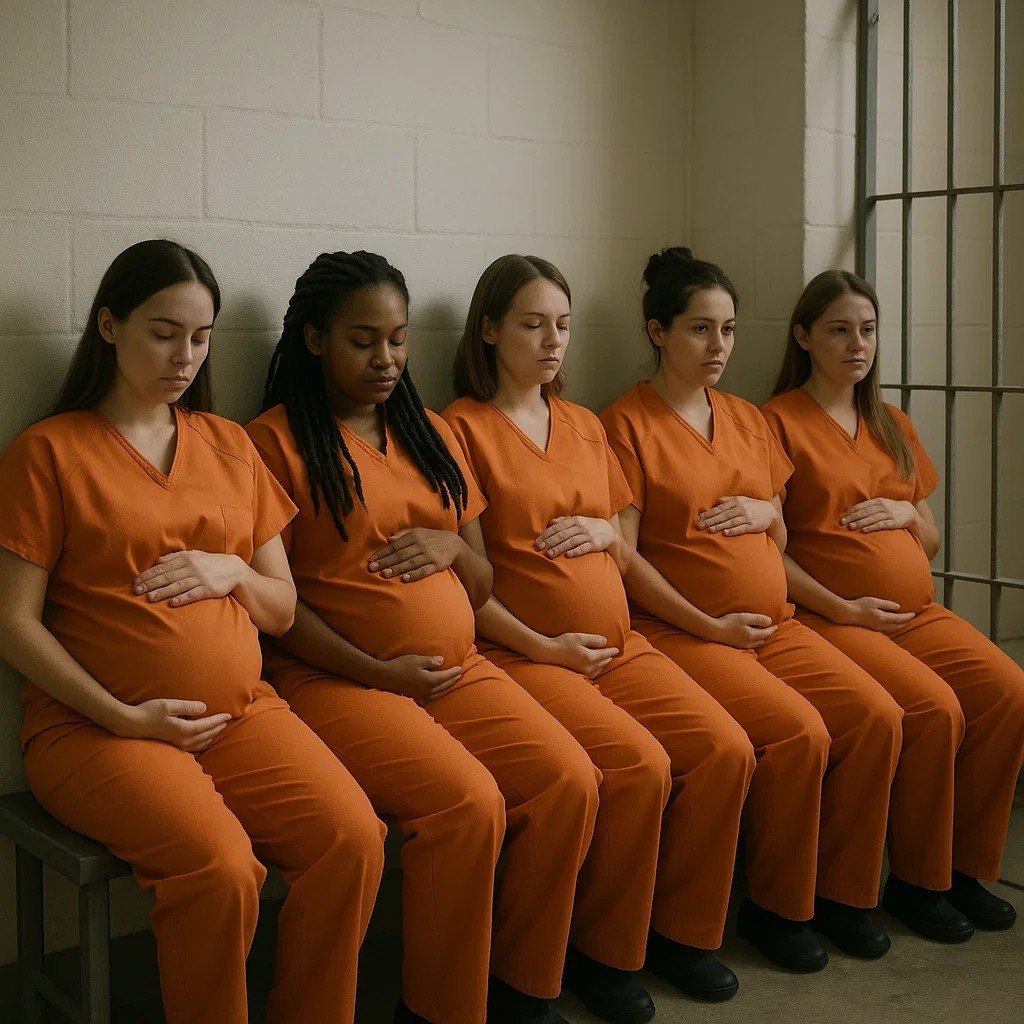Blackridge Correctional Facility was a fortress of order — cold, efficient, and impenetrable. It was the kind of place where secrets weren’t meant to exist. Every hallway had a camera, every door an electronic lock, every inmate a digital record tracking their movements to the minute.
But in late November, whispers began circulating through the sterile corridors of Cell Block C. It started with Inmate #241 — Mara Jennings, a 29-year-old convicted of armed robbery — when she reported persistent nausea and fatigue. The prison medical staff treated it as routine stress. Nothing about Mara suggested anything unusual… until the lab results came back.
Dr. Eleanor Briggs, the facility’s lead physician, stared silently at the report. It was impossible. Blackridge was a maximum-security prison for women only. No male staff had unmonitored contact, and all inmate interactions were recorded and timed. The only conclusion that made sense was the one no one wanted to accept — something, or someone, was operating beyond the cameras.
The First Shock
Eleanor immediately ordered a second test. Then a third. All confirmed the same result. When she informed Warden Samuel Price, his face went pale. “That’s not possible,” he muttered. “Run it again.”
But within two weeks, it wasn’t just Mara.
Three other inmates — all from different blocks — tested positive for pregnancy.
The warden ordered an internal lockdown. Interrogations began. Cell inspections were doubled. The women were questioned for hours, accused of smuggling, making false claims, even attention-seeking behavior. But every test came back genuine.
“How can this happen in a place with no men?” one guard whispered during the morning briefing.
“No men,” another replied, “that we know of.”
A Web of Fear
The pregnancies split the prison. Some inmates were terrified, others defiant. Rumors spread: ghosts, experiments, divine intervention. A few even said they heard noises at night — vents opening, footsteps when no one should be there.
Eleanor, refusing superstition, demanded hidden cameras — not the standard security ones, but covert micro-cameras known only to her and the warden. She placed them near the infirmary, laundry, and storage wings — the only areas lacking direct camera angles.
What she discovered weeks later would turn Blackridge into a national scandal.
The Secret Camera Footage
At 2:13 a.m. on a Tuesday, a hidden camera in the laundry corridor caught movement. A shadow slipped through a ventilation grate, followed by a figure in a full sanitation suit and mask. The person moved precisely, as if aware of the security system’s blind spots.
The footage showed him approaching Inmate #317’s cell. The tiny camera captured a faint flash of metal, a prick to the inmate’s neck, and the figure retreating silently through the vent.
Eleanor replayed the footage five times before speaking.
“Someone’s drugging them,” she whispered. “This isn’t accidental — it’s a controlled experiment.”
When she showed the warden, he turned pale.
“Turn that off,” he said sharply. “Don’t show anyone else.”
But it was too late. The next morning, Eleanor’s office was raided. Her computer confiscated. The footage vanished.
The Whistleblower
Three days later, Eleanor disappeared. Officially, she was “transferred” for security reasons. No forwarding address, no contact.
A week after, an anonymous USB drive arrived at the local newspaper, The New York Sentinel. It contained the footage — and Eleanor’s private notes.
In her journal, she wrote:
“It’s not the guards. It’s not the inmates. It’s the program. Someone inside the government is testing a reproductive serum — a formula enabling conception without intercourse. The inmates were chosen because no one would believe them.”
“The injections occur between 2 and 4 a.m. The staff on duty those nights are contractors, not official employees. Their ID numbers don’t exist in the prison database.”
Her report described symptoms consistent with hormonal manipulation — nausea, rapid cell division, unexplained immune responses. Eleanor’s final note read: “The pregnancies progress at twice the normal rate.”
The Fallout
When The New York Sentinel published the story, outrage exploded nationwide. Protests erupted outside Blackridge. Families demanded answers. The government denied involvement, calling the footage fabricated. Yet investigators found several “contractors” in Eleanor’s notes linked to GenXCore Laboratories, a biotech firm previously accused of illegal gene-editing trials.
Days later, Warden Price resigned abruptly, citing “personal reasons.” His press statement lasted 23 seconds. Asked if the pregnancies were experiments, he said, “No comment,” and walked away.
Within months, five infants were born at Blackridge. The mothers had no visitors. DNA tests were requested but blocked by federal order. The babies were taken into “protective custody” under state supervision. Their location remains unknown.
The Unanswered Questions
Despite media attention, the deeper truth remains buried in bureaucracy and silence. Dr. Eleanor Briggs was never found. Some say she was silenced; others claim she entered witness protection.
An anonymous GenXCore insider later confessed in an encrypted message to a journalist:
“Eleanor was right. It was called Project Genesis. Artificial conception via stem cell activation. They needed hosts — prisons are perfect. No questions asked. No one gets out.”
Asked why the experiments stopped, the source replied:
“They didn’t.”
Epilogue
Months later, a new warden took over Blackridge. Cameras were replaced, and a statement declared “normal operations resumed.”
But a night-shift nurse reported something eerie: every few weeks, faint scratches appeared on infirmary walls — small carvings made with a spoon or nail file. Always the same word, repeated:
“Eleanor.”
Once, beside a newly transferred inmate’s hospital bed, she found a folded piece of paper tucked under the pillow.
